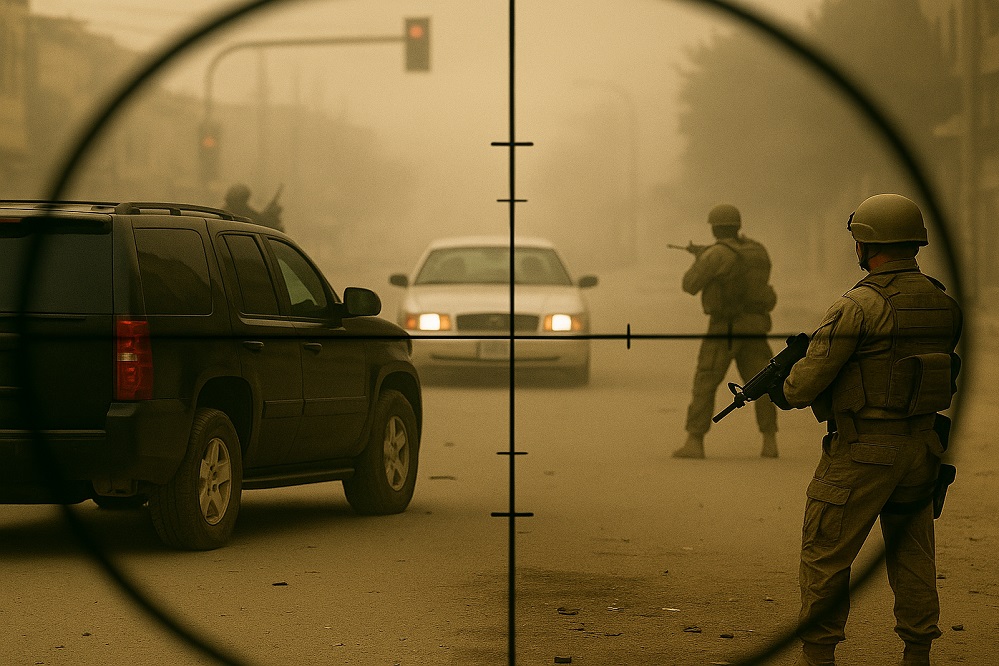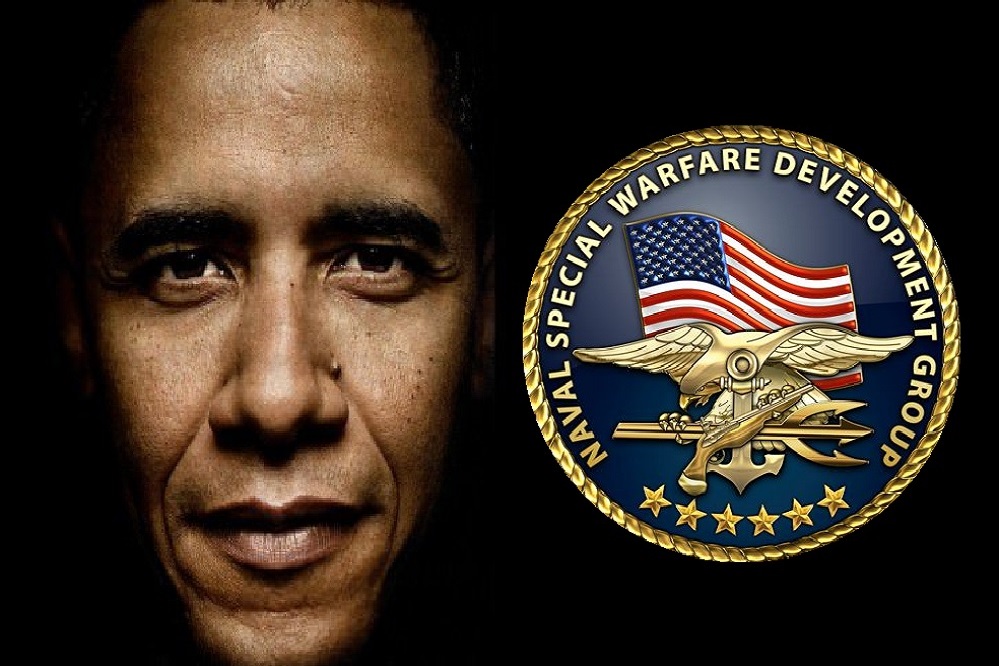INTRODUCTION: A Tragic Day in a War Zone
On September 16, 2007, a group of private security contractors from Blackwater’s Raven 23 team was deployed to Nisour Square in Baghdad to secure a major intersection for a possible U.S. diplomatic convoy. Minutes earlier, a car bomb had exploded elsewhere in the city, and the team was on high alert for secondary attacks — a common insurgent tactic.
When a white Kia sedan failed to stop while approaching the blocked intersection, contractors opened fire, believing it to be a suicide vehicle-borne IED. In the aftermath, 17 Iraqi civilians were killed. The U.S. government, under political pressure, prosecuted four contractors in civilian court — all of whom were convicted and sentenced harshly including life and 30 year sentences.
It is critical to note: Scene photos, aerial layouts, radio logs, and tactical recordings remain sealed or classified. Investigators, the public, and the jury never had full access to all the operational details or evidence available to U.S. intelligence and State Department leadership.
On December 22, 2020 President Donald Trump pardoned the men, calling the trial unfair and their punishment excessive. Here’s what really happened.
INVESTIGATIVE OUTLINE
1. Blackwater’s Role and Mission
- Contractors were hired by the U.S. State Department for high-risk diplomatic protection.
- Raven 23 was deployed not to escort but to secure a fallback evacuation route for a VIP convoy.
- Their objective: Hold Nisour Square, keeping it free of traffic for potential retreat or emergency extraction.
- The VIP convoy had already passed, but the square needed to remain sterile in case of a reversal or emergency — standard security protocol.
- This was critical to ensure enemies did not go in and plant bombs, car bombs, set up ambushes hoping for a return of the VIP convoy.
2. Threat Environment That Day
- A car bomb had just detonated elsewhere in Baghdad — heightening alert levels.
- Blackwater teams were told to anticipate follow-up suicide bombings, a standard insurgent tactic.
- The situation was fluid, fast-moving, and tense — classic asymmetric urban warfare.
- This was not a peacetime checkpoint — it was an active warzone with evolving threats.
3. The White Kia and Perceived Threat
- The car approached the intersection at a steady pace, ignoring warnings to stop.
- Blackwater contractors threw water bottles and used hand signals, but the vehicle continued.
- Nicholas Slatten, a 23-year-old former 82nd Airborne sniper, opened fire believing it to be a VBIED.
- Slatten was trained to eliminate threats before they could eliminate his team — and acted exactly as trained under battlefield rules of engagement.
- For all intents and purposes — that could have been a car bomb.
- There is never a visible sign that a car is a bomb until it explodes.
- The vehicle tragically held two civilians — a young man and his mother.
4. Chaos and Escalation
- After the initial shot, other team members responded to what they believed was incoming gunfire.
- Crowd panic, vehicles trying to flee, and communication breakdowns fueled the engagement.
- Some contractors did not fire at all and later testified against the others, highlighting the chaotic and split-second nature of the event.
- The entire shooting lasted approximately 15–20 minutes.
- Split judgment occurred across the team, with no clear radio orders and conflicting perceptions of what was happening.
5. The Enemy’s Unconventional Warfare
- Insurgents were decentralized, operating without clear command or uniforms.
- Suicide bombers, including women and children, were commonly used.
- Insurgents often told bombers simply: “Find Americans and blow them up.”
- It was impossible to visually confirm who was a threat and who wasn’t in real time.
- The Kia driver may not have understood the danger or warnings — but from the team’s perspective, the profile matched a real threat.
6. Statistics on Car Bombs and Collateral Damage
- Over 81,000 IED attacks occurred in Iraq between 2003 and 2007.
- IEDs were responsible for over 60% of U.S. combat casualties — resulting in 21,200 American wounded or killed.
- An estimated 12,284 civilians were killed in suicide bombings from 2003 to 2010.
- The use of female and child bombers was well-documented — at least 22 female suicide bombers were confirmed by 2007.
- Over 500 children were killed in or used for bombing operations by 2010.
- Car bombs were indistinguishable from normal civilian traffic until detonation.
- Compared to these figures, the tragic death of 17 civilians must be seen in the brutal context of war — not as cold-blooded murder, but a tragedy amid constant threat.
7. The Trial Under Obama
- The case was prosecuted under Barack Obama’s Department of Justice.
- Lead prosecutor: Ronald Machen, an Obama appointee.
- The men were tried in a civilian court, not a military tribunal, despite the combat setting.
- All four were convicted in 2014 — seven years after the incident.
- Slatten was sentenced to life in prison; the others received 30 years each under mandatory minimums.
- These contractors became political scapegoats — their prosecution used to signal accountability to international critics.
- Contractors were used as political sacrifices — thrown to the wolves to appease global opinion.
8. The Public Perception of Contractors
- This incident marked a major turning point in how the public and media viewed private military contractors.
- Blackwater went from being seen as elite protectors to symbols of excess, aggression, and impunity, despite operating in deadly combat zones.
- This shift was driven more by politics and media than by battlefield reality.
9. SEAL Team 6 Parallel: Another Betrayal
- Many of the SEALs who participated in the bin Laden raid were killed in Extortion 17 just months later.
- Mission circumstances were suspicious: poor planning, no backup, and insider leaks.
- Some families and insiders believe it was a deliberate setup — to eliminate witnesses or appease Islamic partners.
- Just like with Blackwater, the Obama administration appeared willing to sacrifice its own warfighters to maintain political optics abroad.
10. Trump’s Pardon
- On December 22, 2020, President Trump pardoned all four Blackwater contractors.
- He stated their sentences were excessive, the prosecution politically motivated, and the battlefield conditions never properly accounted for.
- Trump’s message was clear: “If you defend America, America defends you.”
- This action was seen by many in the military and veteran community as a long-overdue correction of an injustice.
11. Post-Trial Details
- The contractors served approximately 6 years in federal prison.
- Slatten’s first conviction was overturned, retried, and reconvicted by 2018.
- In 2019, the others had their 30-year sentences reduced before being fully pardoned in 2020.
- Legal defense funding sources remain undisclosed, but likely came from a mix of private donations and veteran support circles.
CONCLUSION: WHY THE CONVICTIONS WERE UNFAIR
The Blackwater contractors were not criminals — they were warfighters making battlefield decisions under impossible conditions. Their job was to secure a kill zone for a U.S. convoy. A car approached, refused to stop, and matched the exact profile of a suicide bombing threat in a city where thousands had already died in such attacks.
They were prosecuted not to serve justice, but to serve political interests — to demonstrate accountability to foreign allies and critics. Their trial removed the reality of war and replaced it with sanitized hindsight.
President Trump was right to free them. He understood what Washington had forgotten:
War is hell. And those who walk through it for our protection deserve our defense in return.




